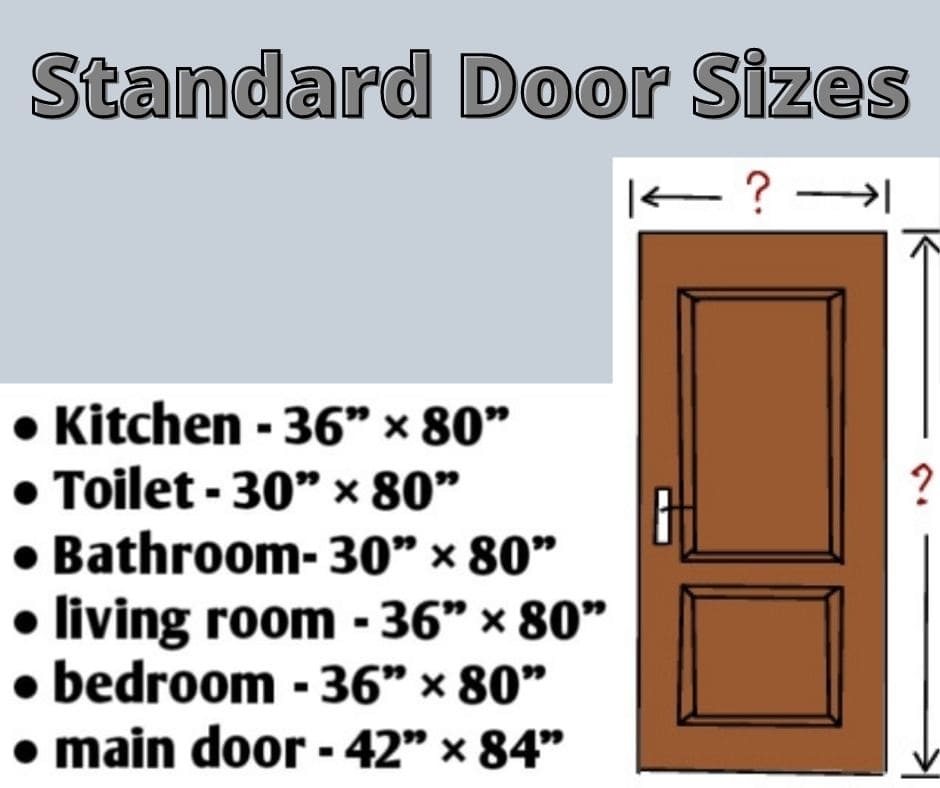Standard Bathroom Door Frame Sizes

Bathroom door frame sizes are crucial for ensuring functionality, accessibility, and overall design aesthetics. Understanding the standard sizes and the factors influencing them is essential for any home renovation or construction project.
Standard Bathroom Door Frame Sizes
Standard bathroom door frame sizes are determined by a combination of factors, including building codes, accessibility guidelines, and common industry practices. Here is a table outlining the most common bathroom door frame sizes:
| Door Type | Width | Height | Thickness |
|---|---|---|---|
| Single Door | 30 inches (76.2 cm) | 80 inches (203.2 cm) | 1 3/8 inches (3.5 cm) |
| Double Door | 60 inches (152.4 cm) | 80 inches (203.2 cm) | 1 3/8 inches (3.5 cm) |
Factors Influencing Standard Sizes
Building codes and accessibility guidelines play a significant role in determining standard bathroom door frame sizes. These regulations aim to ensure safe and accessible spaces for all individuals, including those with disabilities.
Building codes often mandate minimum door widths and clearances to accommodate wheelchairs and other assistive devices.
Single and Double Door Sizes
Single bathroom doors are typically 30 inches wide, while double doors are 60 inches wide. This difference reflects the need for wider openings when using double doors for increased accessibility or to create a more spacious entryway.
Double doors are often preferred for larger bathrooms or when providing access to a shower or bathtub area.
Factors to Consider When Choosing Bathroom Door Frame Size

Choosing the right bathroom door frame size is crucial for both functionality and aesthetics. A well-sized door frame ensures easy access, adequate privacy, and a harmonious look within the bathroom’s overall design. Several factors influence the ideal size, and understanding them can help you make an informed decision.
Bathroom Size and Layout
The size and layout of your bathroom play a significant role in determining the appropriate door frame size. A spacious bathroom allows for a larger door, while a smaller bathroom may require a narrower frame to maximize available space. The layout of fixtures, such as the toilet, shower, and vanity, also influences the ideal door frame size. For example, a bathroom with a shower stall positioned close to the door may benefit from a slightly wider frame to allow for easy access.
Door Style
The style of the bathroom door you choose can also affect the ideal door frame size. For instance, a French door with its double panels requires a wider frame than a single-panel solid door. Similarly, a sliding door system might necessitate a wider frame to accommodate the sliding mechanism.
Privacy Considerations
The level of privacy desired in your bathroom also plays a role in the door frame size. If you prefer a high level of privacy, a door with a solid panel and a standard frame size may be sufficient. However, if you prefer a more open feel, a frosted glass panel or a wider frame with a door that opens outwards might be more suitable.
Accessibility
For bathrooms designed for accessibility, a wider door frame is generally recommended. This ensures easy access for people with mobility limitations or who use wheelchairs. A wider frame also allows for easier movement of assistive devices, such as walkers and canes.
Recommended Bathroom Door Frame Sizes
The table below Artikels recommended bathroom door frame sizes for different bathroom sizes and layouts:
| Bathroom Size | Layout | Recommended Door Frame Size |
|---|---|---|
| Small (50-75 sq ft) | Single-sink vanity, toilet, shower | 28″ x 80″ |
| Medium (75-100 sq ft) | Double-sink vanity, toilet, shower | 30″ x 80″ |
| Large (100+ sq ft) | Double-sink vanity, toilet, shower, bathtub | 32″ x 80″ |
Note: These are general recommendations, and the ideal door frame size may vary depending on your specific needs and preferences. Consult with a professional contractor or architect for personalized guidance.
Installing a Bathroom Door Frame

Installing a bathroom door frame is a crucial step in creating a functional and stylish bathroom space. It provides structural support for the door and ensures a secure and aesthetically pleasing finish. By following the steps Artikeld below, you can successfully install a bathroom door frame, achieving a professional result.
Measuring and Cutting the Door Frame
Precise measurements are essential for a perfect fit. Measure the rough opening, which is the space where the door frame will be installed. Subtract 1/2 inch from each measurement to account for the thickness of the door frame. Use a tape measure to mark the desired length of the jambs and header on the door frame. Employ a saw to cut the jambs and header to the required dimensions.
Bathroom door frame size – Okay, so you’re measuring for that new bathroom door, right? Don’t forget about the personality you want to add to the space! You can totally spice up the bathroom door with some funny bathroom door posters – you know, the kind that make you laugh even when you’re just trying to get ready in the morning.
But hey, remember to factor in the size of the poster when you’re deciding on the bathroom door frame – you don’t want it to block the door, right?
When choosing a bathroom door frame size, remember that it’s not just about aesthetics, but also functionality. A key factor to consider is the minimum bathroom door width , which ensures easy access for everyone, including those with mobility challenges.
A door frame that’s too narrow can be a real pain, especially when trying to maneuver bulky items like a bathtub or a washing machine. So, think practicality and ensure your bathroom door frame size allows for a comfortable and convenient experience.